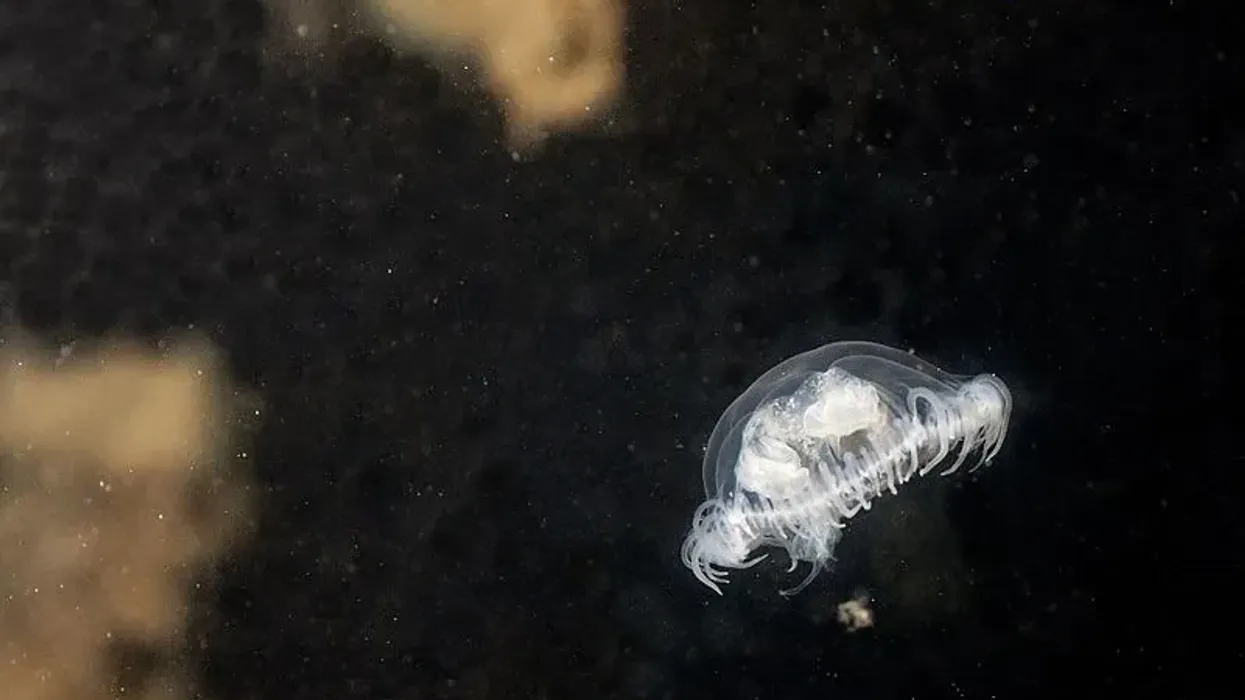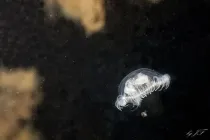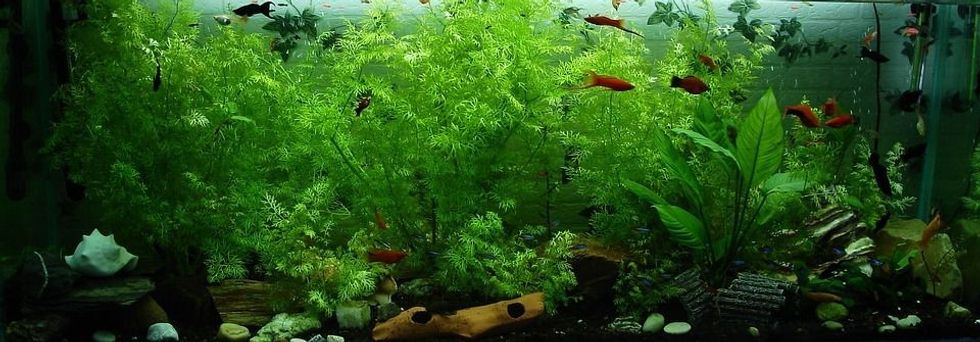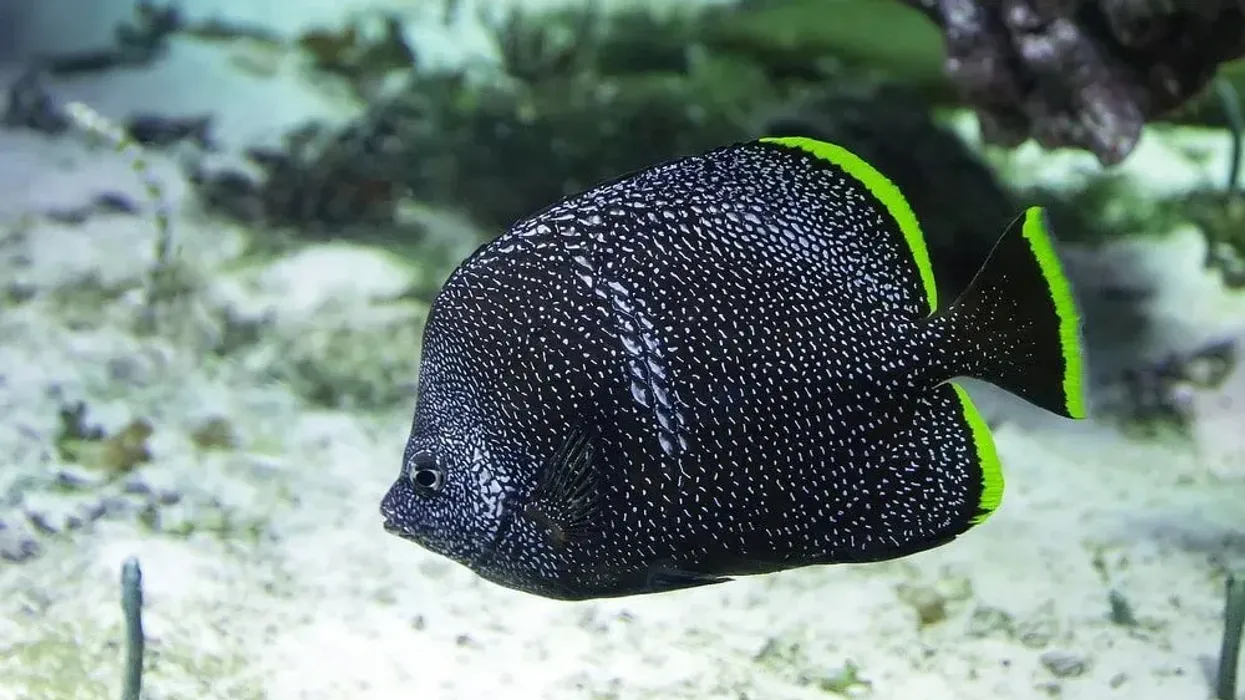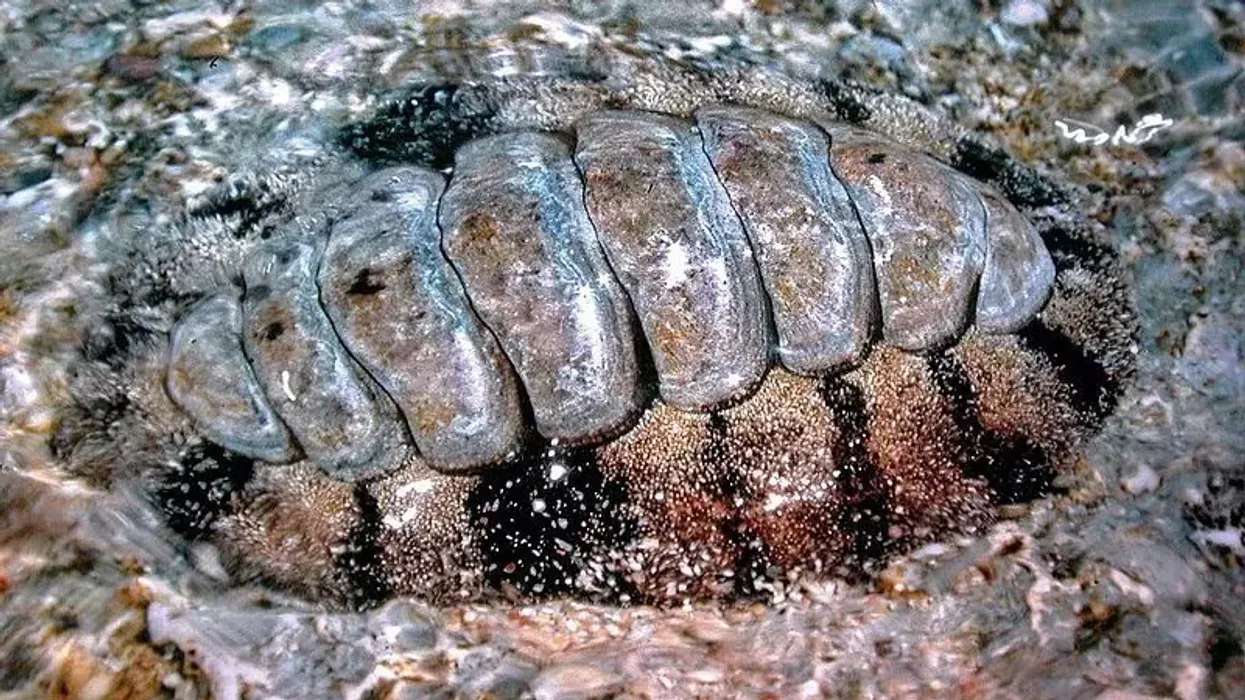Fun Hydrozoan Jellyfish Facts For Kids

Content
- What type of animal is a hydrozoan jellyfish?
- What class of animal does a hydrozoan jellyfish belong to?
- How many hydrozoan jellyfish are there in the world?
- Where does a hydrozoan jellyfish live?
- What is a hydrozoan jellyfish's habitat?
- Who do hydrozoan jellyfish live with?
- How long does a hydrozoan jellyfish live?
- How do they reproduce?
- What is their conservation status?
- What do hydrozoan jellyfish look like?
- How cute are they?
- How do they communicate?
- How big is a hydrozoan jellyfish?
- How fast can a hydrozoan jellyfish swim?
- How much does a hydrozoan jellyfish weigh?
- What are the male and female names of the species?
- What do they eat?
- Are they poisonous?
- Would they make a good pet?
- Did you know...
- How long can a hydrozoan jellyfish's tentacles get?
- How do hydrozoan jellyfish kill their prey?
Marine hydrozoa is a class of small and predatory animals that can live in isolation or in colonies. A few genera of this class live in freshwater, but most of them live in saltwater.
These organisms are closely related to corals and jellyfish and belong to the phylum Cnidaria.
They are extremely diverse, both in morphology and life cycle forms, and can be colonial or solitary in nature. Most hydrozoan species have a medusa stage as well as a polyp stage.
For the polyp stage, it can be one of the two forms of the individuals that are found in several species of cnidarians. In the medusa stage, the medusae can vary in the shape of a bell or a thin disk that is concave below and convex above.
The life cycle of a hydrozoan jellyfish starts from the free-swimming planula to the polyps to the medusa stage.
In the case of colonial Hydrozoans, the zooids or individual polyps are differentiated on the basis of their function. The gastrozozoids feed, the gonozooid gives rise to medusoids that have gametes, and dactylozoids capture prey.
You may also check out the fact files on camel spiders and leafcutter ants from Kidadl.
Hydrozoan Jellyfish Interesting Facts
What type of animal is a hydrozoan jellyfish?
Hydrozoan jellyfish are small predatory animals, some of which live in colonies and some of which live alone. Most of these live in saltwater. Their colonies can be huge and include specialized animals that are incapable of surviving outside the colony.
Hydrozoans belong to the Cnidaria phylum and are related to corals and jellyfish. A type of hydrozoan jellyfish with bioluminescent features is Aequorea Victoria. This glowing hydrozoan jellyfish is found on the west coast of North America.
What class of animal does a hydrozoan jellyfish belong to?
The hydrozoan jellyfish belongs to the Hydrozoa class.
How many hydrozoan jellyfish are there in the world?
An accurate count is unavailable.
Where does a hydrozoan jellyfish live?
Hydrozoan jellyfish locations are the different types of water masses throughout the world, including freshwater and marine. Most medusae are planktonic, but some of them can be benthic. Usually, polyp stages are benthic, but some of them, like the Velella velella, are planktonic. Hydrozoan polyps are simpler in structure, while Anthozoan polyps have a defined structure.
Hydrozoans are present in every form of aquatic habitats, including lakes, ponds, deep-sea trenches, spaces between the sand grains, anchialine canvas, and even on other organisms like fishes, sponges, crustaceans, algae, polychaetes, tunicates, and mollusks. These symbiotic relationships can be parasitic or involve commensalism or mutualism.
What is a hydrozoan jellyfish's habitat?
A hydrozoan jellyfish from the Hydrozoa class live in an aquatic habitat which can occur at a wide range of scales, including a microhabitat on a particular log, a macro-habitat like a riffle or a pool, ocean, or an entire river system. In simple terms, it is a habitat where marine species live.
It can be described in the following ways:
- The nature and shape of the habitat - riffles, pools, reefs, ocean, or billabongs.
- The natural materials comprising the habitat - coral, rocks, sand, mud, and gravel.
- The type of vegetation in the habitat - snags, macrophytes, mangroves, saltmarsh, seagrasses, and seaweeds.
- The overall ecosystem - streams, ocean, wetlands, floodplains, lakes, beaches, or estuaries.
Who do hydrozoan jellyfish live with?
Hydrozoan jellyfish from the Hydrozoa class can spend lives in a colony or live a solitary life.
How long does a hydrozoan jellyfish live?
Hydrozoan jellyfish, or the man o’ war jellyfish, from the Hydrozoa class, do not have a long life cycle. Most adult marine jellyfish, or medusa, live only for a few months, depending on what species they are.
However, some species of this marine life form have lived for two to three years in captivity. Reproduction in polyps can happen asexually, and life goes on for several years or decades.
How do they reproduce?
The female jellyfish from the Portuguese man o’ war species expels their eggs from the main body into the water for reproduction which are then fertilized by males sperm.
After the eggs and sperm are released into the water, and the former is hatched, a free-swimming planula emerges from the egg that looks slightly like a giant paramecium.
Then, the free-swimming planula attaches itself to a surface like a rock, seafloor, or even a fish and starts growing into a stalked polyp that looks like a scaled-down anemone or coral. Lastly, after months or years, the polyp gets launched from the perch and becomes an ephyra or a juvenile jellyfish.
It then grows from the sperm and egg to become an adult jellyfish through this reproduction process.
What is their conservation status?
The conservation status of the marine hydrozoan jellyfish life is Not Listed by the IUCN.
Hydrozoan Jellyfish Fun Facts
What do hydrozoan jellyfish look like?
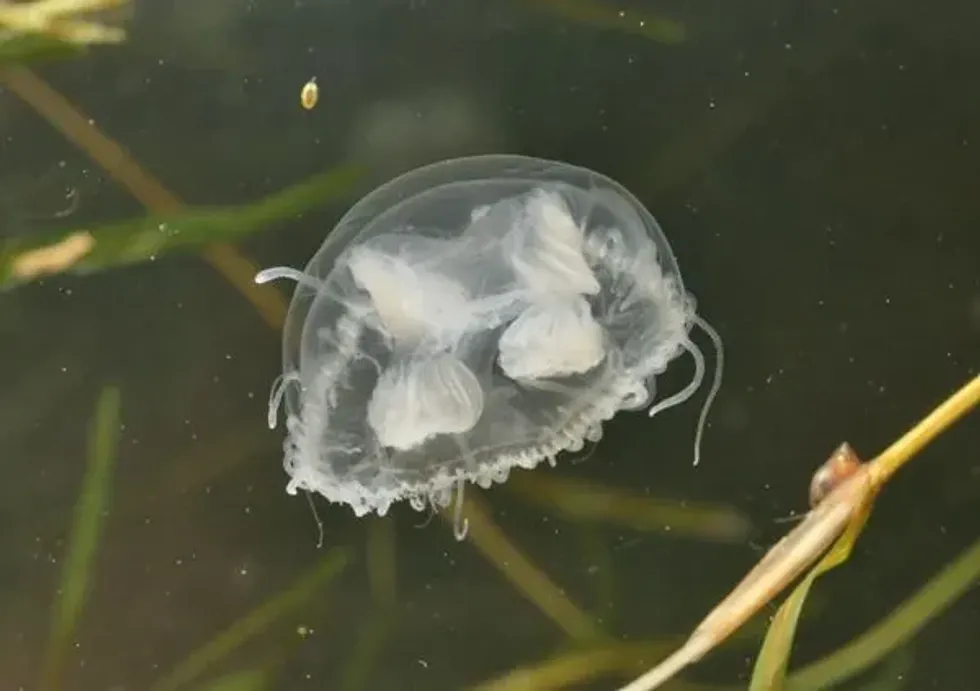
The hydrozoans medusa from the Hydrozoa class is smaller than a typical jellyfish. Their size ranges from 0.2-2.4 in (0.5-6 cm) in diameter.
However, there are some solitary species that can be as large as 3.5 in (9 cm) in size. Their body has a dome shape similar to that of an umbrella and is ringed by tentacles.
There is also a tube-like structure hanging down from the umbrella’s center that has a mouth at its tip. Most of them have four tentacles with nematocysts around the mouth and on them.
There are muscle fibers on the rim of the bell that allows the man o’ war species to move by contracting and relaxing their body. There is another layer of tissue inside the narrow that narrows down the opening at the umbrella’s base.
Because of this narrowing, the force with which the water is expelled is increased, allowing it to swim faster.
How cute are they?
Colonial jellyfish are considered to be among the most attractive creatures in the ocean.
How do they communicate?
Jellyfish from the Hydrozoa class don’t have a language or even a brain, because of which they cannot communicate like humans or other animals. However, they do flash colorful lights. Some scientists believe that these are used for attracting prey or disguising themselves.
Jellyfish can also signal each other. Some species release chemicals to indicate that they are about to start breeding. This results in other jellyfish getting stimulated to spawn.
How big is a hydrozoan jellyfish?
The size of hydrozoans’ medusae from the Hydrozoa class is smaller than the size of a typical fish. Their average size ranges somewhere between 0.2-2.4 in (0.5-6 cm) in diameter. However, some solitary species can be as large as 3.5 in (9 cm). They are five times smaller than a moon jellyfish.
How fast can a hydrozoan jellyfish swim?
The typical speed of a jellyfish is about 0.04 mph (2 cps). Even though they can move faster, it doesn’t help them in ensnaring their prey. That is also the reason why they use the tentacle-waving ‘swimming’ motion.
How much does a hydrozoan jellyfish weigh?
A hydrozoan jellyfish’s weight can be somewhere between 0.4 - 0.9 lb (20-400 g). They can be up to seven times heavier than a leaf-footed bug.
What are the male and female names of the species?
These animals do not have a specific name.
What would you call a baby hydrozoan jellyfish?
A baby hydrozoan jellyfish would be referred to as offspring.
What do they eat?
Medusae and polyps from the Hydrozoa class are mostly carnivorous feedings on animals of the right size. Mostly, they're known for feeding on crustaceans like copepods by using their tentacles.
Polyps have a more varied diet as they feed on a wide range of prey. Some of them are functionally photosynthetic and have a symbiotic relationship with zooxanthellae.
Medusae, on the other hand, are voracious predators who are at the top of the food chain when it comes to consuming larvae and fish eggs. Both carnivores use their cnidocytes to capture their food.
Are they poisonous?
Yes, hydrozoan jellyfish from the Hydrozoa class are poisonous. They have venom-filled nematocysts that they use to sting and kill sea creatures like shrimp and small fish. In fact, the sting from their tentacles can be dangerous to humans.
In rare cases, it has even resulted in death. In most cases, however, the stings cause excruciating pain.
Even if their tentacles have detached for several weeks and they wash up on the shore, their sting can be just as painful. The venom might travel to your lymph nodes and result in intense pain. Some might even need medical attention.
Would they make a good pet?
Taking care of even a small hydrozoan jellyfish during the polyps or medusa stage can be extremely hard. Even a small change in the temperature of water might result in their death. So, unless you are an expert who can take good care of them in the polyp as well as medusa stage, they won’t make a good pet.
Did you know...
The Hydrozoans are related to corals and jellyfish and are from the phylum Cnidaria. However, hydrozoan jellyfish are not considered real or pure jellyfish. Only the Scyphozoa are considered true jellyfish and they are called as such so that they are not confused with hydrozoan jellyfish, which may have a similar structure but are not actually Scyphozoa.
The ancestral evolutions of hydrozoan jellyfish can date back to 540 million years and had their own class, instead of evolving from a certain species.
They are extremely diverse in terms of morphology and life cycle forms and can be colonial or solitary.
Most of the hydrozoan species have a medusa stage (the medusae can vary from the shape of a thin disk to the shape of a bell which is slightly concave below and scarcely convex above) and a polyp (one of the two types of individuals found in several cnidarian species).
But some of the species make use of either one or the other. Here are a few examples of hydrozoans:
- Hydra - Hydra is a genus of freshwater animals that possess radial symmetry. They can be found in unpolluted freshwater lakes, streams, and ponds in tropical and temperate regions. To collect the hydra, all you need to do is get a collecting net and sweep it gently through the woody areas. Since hydra is only a few millimeters long, you will need a microscope to study the hydra in the best way.
- Obelia - The Obelia species include Obelia bidentata, Obelia dichotoma, Obelia longissima, and Obelia geniculata. This genus from the Hydrozoa class mainly consists of some freshwater and mostly marine species that have medusa as well as polyp stage in their life cycle. Belonging to the phylum Cnidaria, this genus includes all aquatic organisms that have a relatively simple structure. They are naturally found underwater in oceans all over the world.
- Physalia physalis - It also goes by the name of Portuguese man o’ war, man-of-war, bluebubble, or bluebottle. Many think the Physalia physalis to be a jellyfish, but it is actually a colony of specialized medusoids and polyps known as a siphonophore. It has an air bladder as an internal organ that allows it to control its buoyancy and it cannot swim like a jellyfish. Also, it enables them to stay, ascend, or descend from the current water depth without wasting a lot of energy by swimming. This air bladder is also known as the ‘sail’ or the ‘pneumatophore’. There is no way of propulsion for the Portuguese man o’ war because of which they are pushed by the current and the winds. In order to ensure their survival, their bladder has to remain wet. Every now and then, they roll slightly so that the surface can become wet allowing them to float. In order to escape a surface attack, the pneumatophore gets deflated that allows them to submerge briefly.
How long can a hydrozoan jellyfish's tentacles get?
Under the body of the hydrozoan jellyfish or the Portuguese man o’ war are the long tentacles. The average size of these dangling tentacles is 3 ft (1 m). However, below the surface, they can reach a length of 33 ft (10 m). Hydrozoan jellyfish drawing is easy.
How do hydrozoan jellyfish kill their prey?
The hydrozoan jellyfish or the Portuguese man o’ war use their venom-filled nematocysts for stinging and killing small sea creatures like shrimp and small fish. The sting from their tentacles can be dangerous to humans as well.
In fact, these stings have been responsible for several deaths. However, in most cases, they only cause excruciating pain.
Detached specimens and tentacles that wash up on the shore can give you a sting as painful as one from the creature living intact in the water. Even for weeks after detachment, they are just as dangerous.
The venom travels to the lymph nodes, and depending on how much venom is there, it can cause intense pain. Medical attention might be required in extreme cases.
Here at Kidadl, we have carefully created lots of interesting family-friendly animal facts for everyone to discover! Learn more about some other arthropods from our immortal jellyfish facts or sea squirt facts pages.
You can even occupy yourself at home by coloring in one of our free printable hydrozoan jellyfish coloring pages.
We Want Your Photos!
More for You
Master of Computer Science

Abhijeet ModiMaster of Computer Science
An experienced and innovative entrepreneur and creative writer, Abhijeet holds a Bachelor's and Master's degree in Computer Application from Birla Institute of Technology, Jaipur. He co-founded an e-commerce website while developing his skills in content writing, making him an expert in creating blog posts, website content, product descriptions, landing pages, and editing articles. Passionate about pushing his limits, Abhijeet brings both technical expertise and creative flair to his work.
Bachelor of Arts specializing in English Literature, Masters of Art specializing in English and Communication Skills

Sonali RawatBachelor of Arts specializing in English Literature, Masters of Art specializing in English and Communication Skills
Sonali has a Bachelor's degree in English literature from Guru Gobind Singh Indraprastha University and is currently pursuing a Master's in English and Communication from Christ University. With considerable experience in writing about lifestyle topics, including travel and health, she has a passion for Japanese culture, especially fashion, and anime, and has written on the subject before. Sonali has event managed a creative-writing festival and coordinated a student magazine at her university. Her favorite authors are Toni Morrison and Anita Desai.
Disclaimer
1) Kidadl is independent and to make our service free to you the reader we are supported by advertising. We hope you love our recommendations for products and services! What we suggest is selected independently by the Kidadl team. If you purchase using the Buy Now button we may earn a small commission. This does not influence our choices. Prices are correct and items are available at the time the article was published but we cannot guarantee that on the time of reading. Please note that Kidadl is a participant in the Amazon Services LLC Associates Program, an affiliate advertising program designed to provide a means for sites to earn advertising fees by advertising and linking to Amazon. We also link to other websites, but are not responsible for their content.
2) At Kidadl, we strive to recommend the very best activities and events. We will always aim to give you accurate information at the date of publication - however, information does change, so it’s important you do your own research, double-check and make the decision that is right for your family. We recognise that not all activities and ideas are appropriate for all children and families or in all circumstances. Our recommended activities are based on age but these are a guide. We recommend that these ideas are used as inspiration, that ideas are undertaken with appropriate adult supervision, and that each adult uses their own discretion and knowledge of their children to consider the safety and suitability. Kidadl cannot accept liability for the execution of these ideas, and parental supervision is advised at all times, as safety is paramount. Anyone using the information provided by Kidadl does so at their own risk and we can not accept liability if things go wrong.
3) Because we are an educational resource, we have quotes and facts about a range of historical and modern figures. We do not endorse the actions of or rhetoric of all the people included in these collections, but we think they are important for growing minds to learn about under the guidance of parents or guardians.
